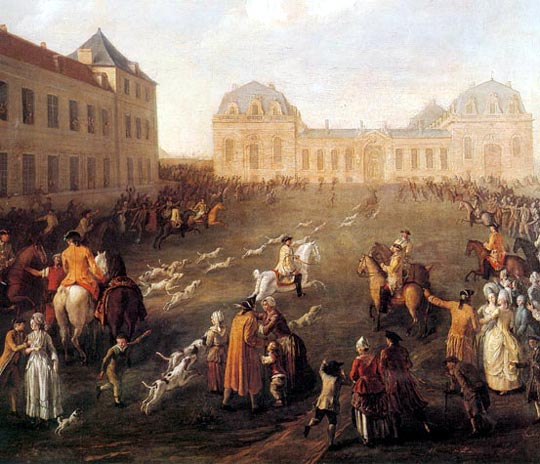Throughout the colonial period of the three Americas, the respective mother countries were governed by a regime that, some differences aside, is known generically as the Old Regime. This was the system European countries implanted in their colonies.
With the successive proclamations of independence by the American nations, this regime ceased to exist in the New World. In effect, the several independence movements worked as so many “French Revolutions,” for they almost entirely demolished the Old Regime in the Americas. To a greater or lesser degree, the Old Regime was supplanted by regimes with goals and “ideals” stemming from the French and the American Revolutions.
It is illusory to think that these movements in the colonies sought only to proclaim independence from their respective mother countries. They also intended to make the Revolution,(1) which was not merely a revolution for independence but the egalitarian Revolution for the overthrow of the Old Regime and the installation of egalitarian democracies in every country.

A caricature of the Old Regime, 1789, showing The Old Regime as the Clergy, the Aristocrats and the Peasants, implying that the entire burden was being placed on the Peasants.
A widespread myth exists in the Americas that at a certain moment fiery explosions of republican and egalitarian sentiment erupted spontaneously, consuming the last remnants of colonial traditions. This is obviously an exaggeration.
Clearly, there was a common revolutionary ideology behind these revolutions. Clearly, they exerted an influence on each other. A victorious revolution in one nation heightened the conviction that a similar movement could succeed elsewhere and imparted an élan to revolutionaries, a precious factor in their ultimate victory.
It would be a mistake, however, to think that this revolutionary conflagration flamed across the hemisphere without resistance. On the contrary, important points of resistance often forced revolutionary movements to abandon the direct path in favor of a circuitous route replete with twists and turns, and even surprises.
As we have noted, such a course can be observed in the early history of the United States, the model democratic country of the Americas, where strong monarchist and aristocratic resistances forced the egalitarian republican movement to advance with prudence and to implement its more radical goals only gradually.
Such gradualism is evidenced in the French Revolution’s three successive phases:
1) Absolute monarchy until 1789 (Estates General);
2) Increasingly radical revolutionary government until the abolition of royalty n 1792 (Constitutional Assembly and Legislative Assembly);
3) Radical revolutionary republican government (Convention and Terror).
Similar phases can be observed in many of the egalitarian revolutions of the New World.

The Society and Economy Under the Old Regime. Painting titled “The Rustic Hours,” by Henry Gillbank, after Francis Wheatley, R.A.
Another myth is that the revolutions of the Americas were sparked by class struggle. The opposite is true. Not infrequently, the initial revolutionary impulse took on an aristocratic character and strived to gain the support of the aristocracy. The presence of numerous aristocrats at the forefront of the revolutionary movements in many American countries is noteworthy. The republican revolutions often succeeded precisely because they were led by men who enjoyed the public’s confidence as aristocrats. The people trusted these men not only because of their social status and influence, but because of the tone of seriousness and morality that they assigned to public life. This respectability predisposed the people to accept a populist democracy in the United States and other countries of the Western Hemisphere. Moreover, in the revolutionary ferment, many of the aristocrats themselves became accustomed to a state of affairs that led them to voluntarily and even happily relinquish their privileges.
(1) This term is used here in the wide sense given it by Prof. Plinio Corrêa de Oliveira in the essay Revolution and Counter-Revolution to designate a process that through the centuries has been destroying the Christian civilization built in the Middle Ages.
Plinio Corrêa de Oliveira, Nobility and Analogous Traditional Elites in the Allocutions of Pius XII: A Theme Illuminating American Social History (York, Penn.: The American Society for the Defense of Tradition, Family, and Property, 1993), Appendix I, pp. 283-284.














